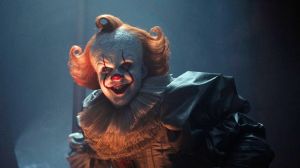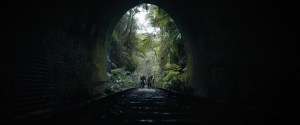When it comes to Stephen King’s IT, the Dancing Clown is just the tip of the iceberg. The entity lurking beneath Derry, Maine, is a primordial cosmic horror that preys on the neighborhood kids. While the clown named Pennywise (or perhaps Robert “Bob” Gray) may be the monster’s most iconic mask, its reign of terror is only possible due to a horrific shapeshifting ability. Each time IT appears, it takes the shape of whatever the victim is most afraid of.
Videos by ComicBook.com
Across the 1986 novel, the 1990 miniseries, and Andy Muschietti’s two-part film adaptation, IT chronicles the adventures of the Losers Club as they attempt to face down the entity. Due to the characters’ wide array of fears and traumas from childhood into adulthood, IT takes on over 30 different forms in the novel alone. Some have already been put to screen, while some remain book-monsters with possible Welcome to Derry appearances to come. Based on everything from the targets’ most recently watched horror movie to their deepest-rooted fears, these are the 10 scariest forms IT takes that aren’t Pennywise.
10) The Werewolf
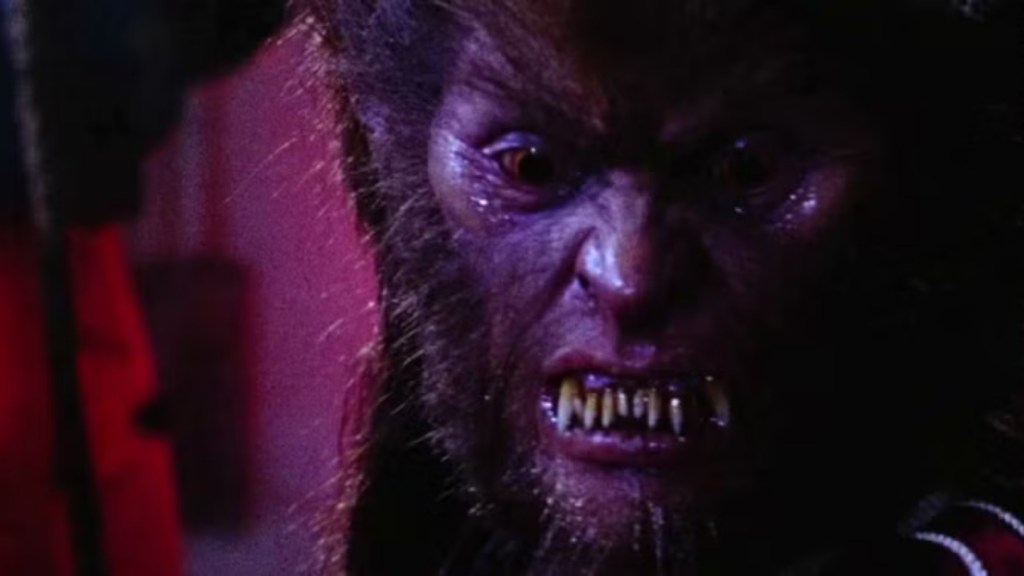
When Richie Tozier and Bill Denbrough first face IT in the Neibolt House, it takes a snarling form straight out of I Was a Teenage Werewolf, complete with letterman jacket. The monster hunts them through the house and down the street, in a tangible manifestation of the horror film that spooked Richie. Seemingly targeting his character, many fans have speculated that IT is also weaponizing Richie’s biggest insecurity, the truth about his implied sexual orientation. Whether you concur, perhaps the scariest part of this chapter in the novel is that when the two boys debrief about the encounter, Bill reveals to Richie that he didn’t see the werewolf at all, but the clown.
9) The Giant Bird
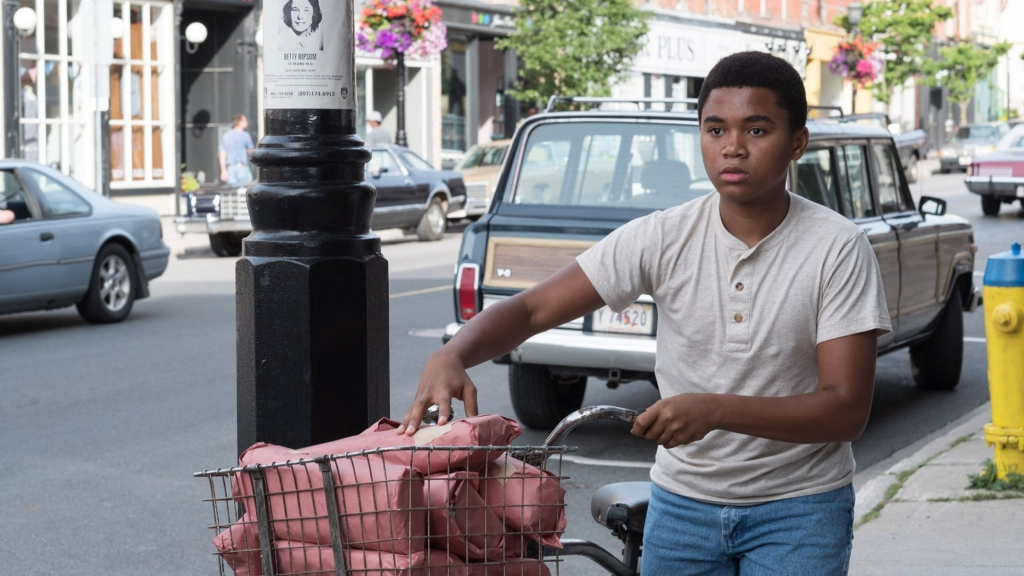
In the novel, IT appears to Mike Hanlon as a massive prehistoric bird. The bird attacks Mike as he’s exploring the Kitchener Ironworks. Though sadly left out of the film, King describes its wingspan as so vast that it casts a shadow over the entire field. This would be terrifying to anyone, but it’s specifically tailored to Mike’s fears. When he was a baby, a crow attacked him in his crib, and the fear nested in his subconscious. This was combined with a childhood memory of seeing Rodan, the 1956 Japanese monster movie about a gigantic flying reptile. Mike’s father, William Hanlon, had also encountered IT decades earlier during the fire at the Black Spot, when it appeared to him as the same giant bird. King’s terrifying description and the implications of generational trauma make it especially disturbing.
8) The Mummy

For Ben Hanscom, IT momentarily takes the shape of a rotting Egyptian mummy. The creature shuffles toward him by the frozen canal, its bandages dragging through the snow, stinking of death. It’s a scene of suffocating dread that conjures Boris Karloff’s The Mummy. Ben’s fear of the mummy has been widely debated among fans. The consensus is that, if there is a deeper meaning beyond the mummy being creepy horror film fodder, it’s that it represents Ben’s fear of dying alone, shrouded in obscurity. Whether it’s a metaphor or simply a primal fear of reanimated corpses, the image of IT rotting, wrapped in bandages and carrying the red balloons that float against the wind, is nightmarish enough to earn it a spot on the list.
7) The Spider

The giant spider form is IT’s truest physical manifestation, appearing during the Losers’ final battle, though admittedly more terrifying in the novel than in either the miniseries or It Chapter Two. King describes it as the closest thing human minds can perceive to IT’s real self, which is an alien being birthed from the void known as the Macroverse. When the Losers see it, they’re staring at the limit of comprehension. For all its surrealism, the spider also represents entrapment, or a predator that spins webs, waits, and feeds. The spider, which all of the Losers perceived as such, placed IT as the mother of Derry’s sinister web.
6) Betty Ripsom
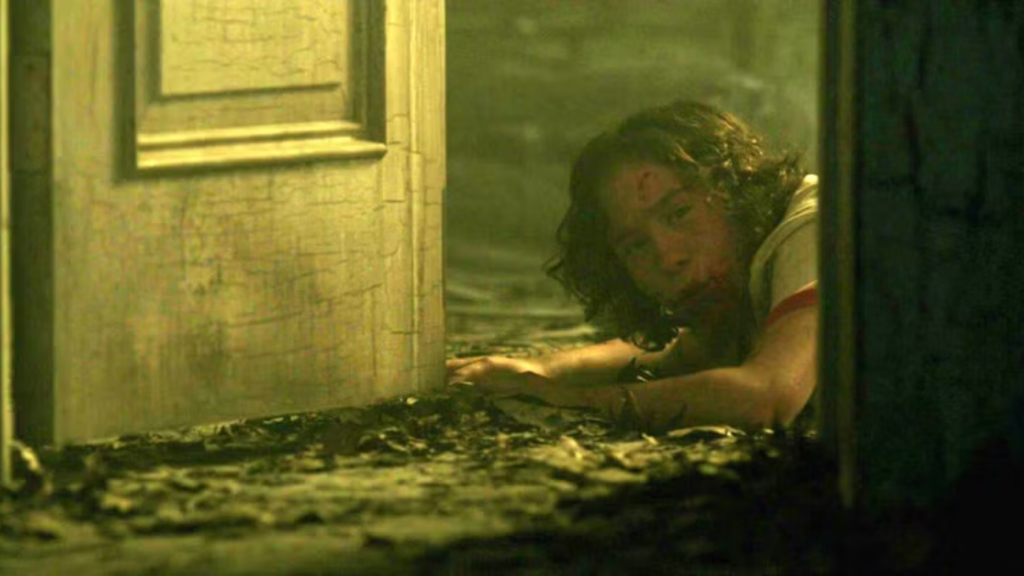
Betty Ripsom is a missing teenage girl whose death becomes one of the earliest crimes that lock the Losers’ Club into Derry’s terrible cycle. Later, in the films, Pennywise assumes multiple forms, including a zombie half-corpse glimpsed in the sewers, whose body was torn apart by IT. The gruesome backstory makes this form particularly disturbing both in the novel and the 2017 film. IT uses Betty’s image and voice to torment both her parents and the Losers’ Club. IT even appears to Henry Bowers and his gang via an apparition of Betty’s, urging him to “Kill them all.” In It Chapter Two, Richie and Eddie open the “Very Scary” door to find just her legs skipping toward them. For the Losers, IT’s form as Betty is a cruel reminder of what has been lost in Derry.
5) Alvin Marsh
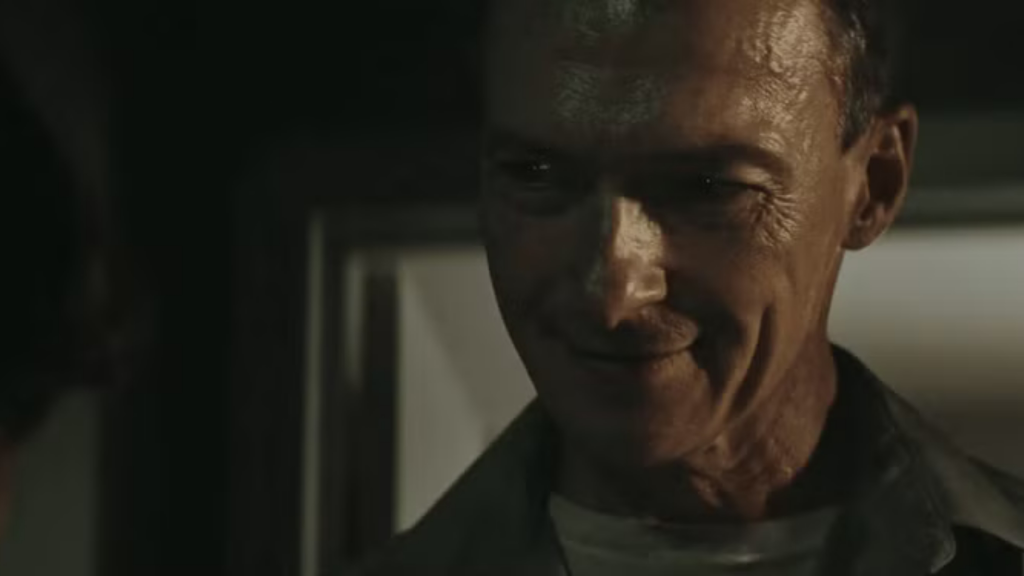
For Beverly Marsh, IT’s cruelest trick is taking the form of her abusive father. In both the book and films, IT channels Alvin Marsh’s possessive violence. While the scenes with the real Alvin Marsh are terrifying in a totally different way, IT uses the familiar form to evoke Beverly’s fears about womanhood and the terror of being trapped under a man’s control. More so than most of the boys, Beverly’s home life as a child (and as an adult) is a waking nightmare. IT doesn’t take on claws or fangs for her, but rather a heightened version of a man under whose thumb she resides. By doing so, IT also becomes the embodiment of every adult in Derry who is consumed by the darkness.
4) The Leper

Near the Neibolt House, Eddie Kaspbrak sees a rotting man staggering toward him, covered in sores, coughing blood, and offering “a blowjob for a dime.” In both King’s novel and the 2017 film, Eddie can barely breathe, frozen in a panic attack as the creature corners him. The Leper reeks of decay and disease, the embodiment of everything Eddie’s been conditioned to fear. Eddie’s mother, Sonia, has spent his entire life convincing him that the world outside is toxic, that germs, people, and life itself are dangerous. IT latches onto Eddie’s psychological damage, manifesting as a living infection. The Leper’s grotesque physicality (dripping sores, black mucus, a sickly rasp) extends into body-horror territory, especially in the 2017 adaptation.
3) Mrs. Kersh
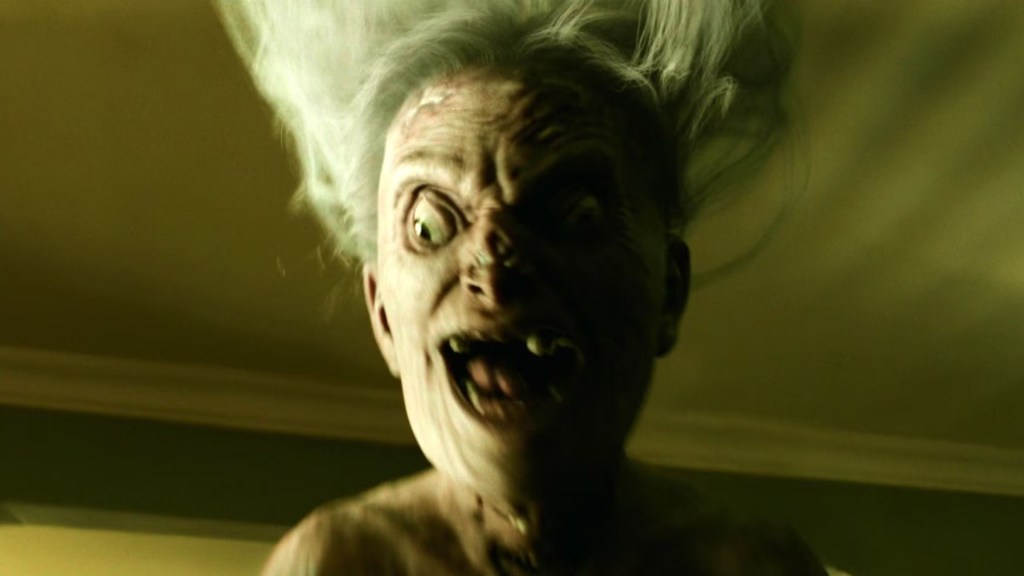
When Beverly returns to Derry as an adult in the book and It Chapter Two, she visits her old apartment, where she meets Mrs. Kersh, a kindly old woman who offers her tea and talks about her father. But as the scene unfolds, the cracks start to show. Mrs. Kersh moves strangely, the shadows distort, and she eventually emerges as a towering, horrific creature with skin sagging and an inhumanly wide smile. The way the polite façade disintegrates to reveal the horror is particularly bone-chilling. While she may be a little more subtle in the novels than in the film, she nonetheless manifests Beverly’s unresolved fear of aging and womanhood. Mrs. Kersh’s grotesque body perhaps mirrors Beverly’s fear of turning into the other women in her family who are trapped, abused, dismissed, and sometimes turned into monsters themselves.
2) Georgie’s Corpse
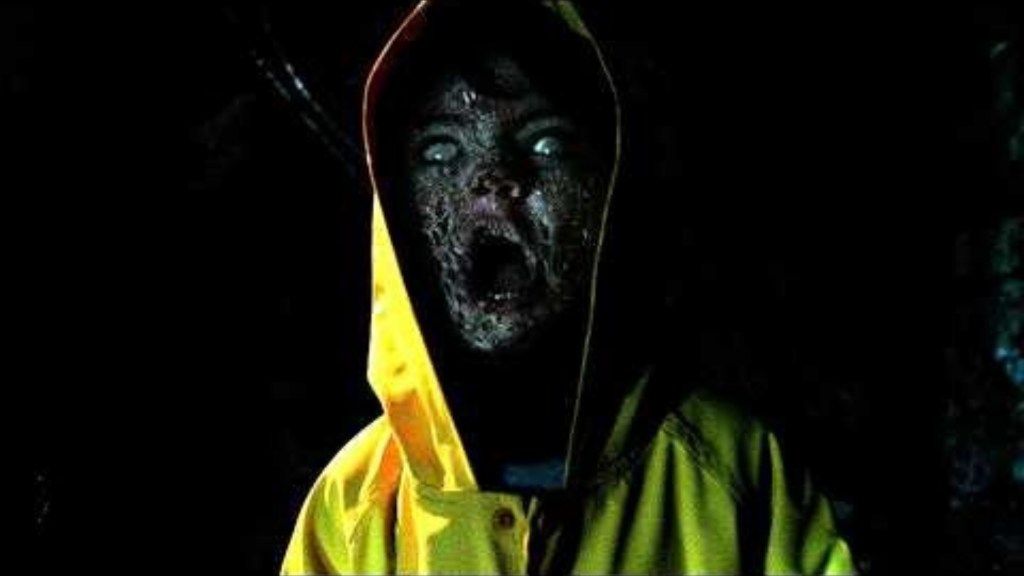
In both the book and the 2017 adaptation, IT torments Bill Denbrough by using his dead brother Georgie’s image against him. When Bill returns to the sewer, he sees Georgie’s corpse, with his face half-eaten, arm missing, begging him to come and play. The image is at once cruel, heartbreaking, and terrifying. It’s particularly effective because Georgie’s death is at the heart of the sprawling narrative.
The sick reanimation of the child’s corpse is designed to bait the grief and guilt that follow Bill’s character throughout. For Bill, Georgie’s death is the defining trauma of his life. Bill blames himself for letting Georgie go out in the rain that day, and IT keeps the wound open. It may seem strange that the most terrifying physical form the monster takes is not the giant spider or the sickly leper, but, in fact, a character we care about. IT, as Georgie, most expertly evokes the unique emotional horror and dread that King is known for.
1) The Deadlights

The Deadlights are IT’s true form, and not something that can be seen without losing your mind. It’s the unfathomable energy from beyond reality. In the novel, Beverly glimpses them when she’s caught in IT’s jaws, describing them as swirling orange lights. In the films, the Deadlights are what’s inside Pennywise’s mouth, making the monster capable of levitating victims before consuming them. They’re the ultimate representation of incomprehensible power and evil. Most closely getting at the existential dread plaguing all of the characters.
They represent what happens when humans come face to face with their own mortality, with the idea of hell, and with something too vast to understand. Everyone in Derry has personal fears plucked out of their lives or the collective pool of symbols, but the Deadlights are the thing in itself. The raw essence of fear. When Beverly, Bill, and the others defeat IT, they aren’t simply defeating a killer clown; they are staring into the void and resisting its pull.
Which form of IT do you find the most frightening (in the novel or adaptations)? Leave a comment below and join the conversation now in the ComicBook Forum!

